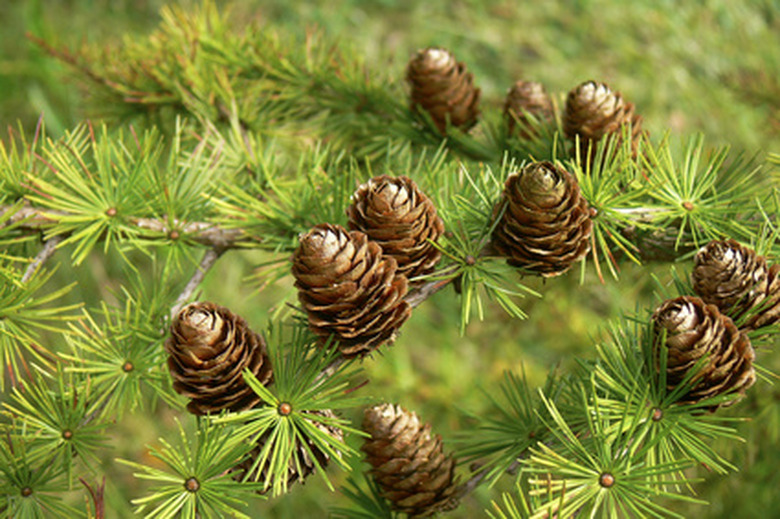Facts Of Black Spruce Trees
Black spruce trees (Picea mariana) are coniferous evergreens desirable for their distinctively-colored needles and pine cones and tall, slender shape. These tall but slow-growing trees, which are native to North America, are not as well-known in the United States as some of their more familiar cousins, such as the blue spruce and Sitka spruces. In fact, these trees are only found in cold, northeastern parts of the country, according to Virginia Tech University.
Black spruce trees (Picea mariana) are coniferous evergreens desirable for their distinctively-colored needles and pine cones and tall, slender shape. These tall but slow-growing trees, which are native to North America, are not as well-known in the United States as some of their more familiar cousins, such as the blue spruce and Sitka spruces. In fact, these trees are only found in cold, northeastern parts of the country, according to Virginia Tech University.
Appearance
Black spruce trees can reach heights of 70 feet when found in the wild, but usually reach a maximum height of around 40 feet in home landscapes. The trees have stiff, small, bluish-green needles that are only 1/2 inch in length at the most. The plump pine cones are also small—the smallest of all the spruce species, in fact—at only an inch in length. The scaly bark is thin and reddish or gray-brown in color.
- Black spruce trees (Picea mariana) are coniferous evergreens desirable for their distinctively-colored needles and pine cones and tall, slender shape.
Climate
Black spruce trees thrive in cold temperatures and intensely dislike summer heat, according to North Carolina State University. In fact, these trees will only grow well in the coldest areas of the United States. Black spruce trees are recommended only for U.S. Department of Agriculture (USDA) plant hardiness zones 2 through 5.
Culture
Although these trees do not like hot temperatures, they do like sunny weather, and grow best in exposure to full sunlight. Black spruce trees thrive in moist, rich soil that is well-draining. Areas that are prone to flooding or collect standing water may cause root rot in young trees, which will eventually kill the plant.
Problems
Eastern dwarf mistletoe tends to overtake these trees, causing the needles to clump up and become deformed. In time, the tree itself will grow misshapen, according to Virginia Tech. The spruce budworm can infest these and other spruce trees, devouring the foliage and eventually causing the tree to die in cases of severe defoliation.
- Black spruce trees thrive in cold temperatures and intensely dislike summer heat, according to North Carolina State University.
- Eastern dwarf mistletoe tends to overtake these trees, causing the needles to clump up and become deformed.
Cultivars
There is only one cultivar of the black spruce, according to Oregon State University and North Carolina State University. It is Picea mariana "Aureovariegata". This tree has variegated needles. The ends of the needles in young black spruce trees are a bright, yellow-gold color.
